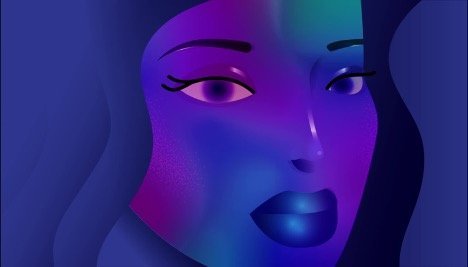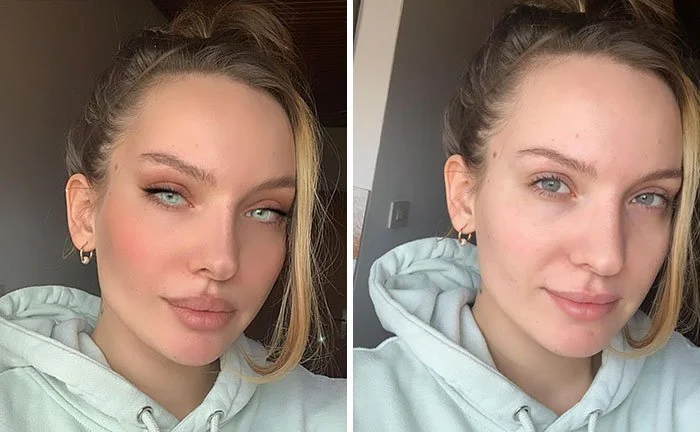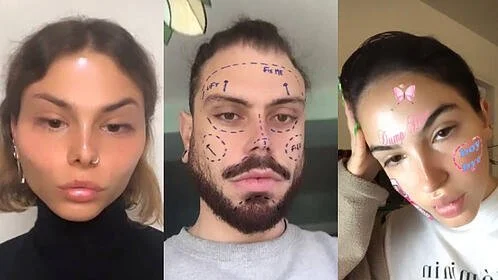How Instagram and Snapchat Filters Are Beginning to Alter Our Perception of Self
Like most, if not all, of you, I'm guilty of taking a selfie every so often. My routine usually goes something like this: I finish doing my makeup at my desk, then I open Snapchat and look for filters to combat my horrible apartment lighting. This always proves to be a hassle; filters either make me look too orange or give me freckles and obnoxiously bright, blue eyes. Thinking I've finally found a filter, (almost always ambiguously named something along the lines of “Coffee” or “Malibu”) I tap on it and instantly notice something is a little off. My face looks slightly different, albeit probably not noticeable to anyone else. I’ve noticed that filters that are supposed to alter the saturation and color of my surroundings also tend to reconstruct my facial features, despite not advertising to do so. These sneaky filters subtly make my nose thinner, my lips bigger, my chin sharper.
These facial attributes have become the cyborg-ian, cookie-cutter “Instagram face”. Almost all Instagram influencers unnaturally possess thin, upturned noses, strong jawlines, big, pouty lips, clear, pore-less skin, and high cheekbones. Such filters on Snapchat and Instagram attempt to replicate these facial features to a T. In the past, we were only able to compare ourselves to the “perfect” celebrities or models on magazines, television, and other various forms of media. Now, with the constant influx of edited and filtered Instagram posts and Snapchat stories, we compare ourselves to not only our airbrushed and enhanced peers but to users from all over the world. Additionally, the creation and usage of facial filters allow us to compare ourselves to digitally “enhanced” or “idealized” versions of ourselves. We no longer have to wonder what we would look like with a little filler or augmentation; we now know and are constantly reminded of what could be with just a little work.
Digitally enhanced versions of our “ideal” self can be a source of unhealthy obsession and facial dysmorphia in many users. The growing popularity of facial filters and photo editing apps has also sparked a surge in cosmetic surgeries. According to research, lip augmentation procedures have increased 71% percent since the year 2000. According to plastic surgeons, one of the most common reasons for going under the knife is to look better in selfies. Several friends of mine have mentioned that if they were to get plastic surgery or augmentations, they would want lip fillers, a cat-eye facelift, and to remove fat from their jawline, making it slimmer and sharper. It’s no coincidence that these desires mirror the modern Instagram beauty standard and filters we, as users, have access to on the daily. It certainly doesn't help that the world has become increasingly digital since the pandemic, allowing such platforms to reach record engagement levels. Even applications like Zoom have implemented features that allow you to wear virtual makeup and smooth your skin.
In a time where digitally altering your appearance in exchange for positive reinforcement such as likes, views, and comments has become the norm, it's important to remember that beauty ideals and standards are fleeting. What isn’t fleeting, however, is the individuality and unique beauty of every human being. The filters and enhancements you see in photos every day aren’t real, but your natural beauty is as real as it gets.
Strike Out,
Writer: Jayna O
Editors: Breanna Tang & Lexi Fernandez
Graphics: Olivia Glatzer
Tallahassee



